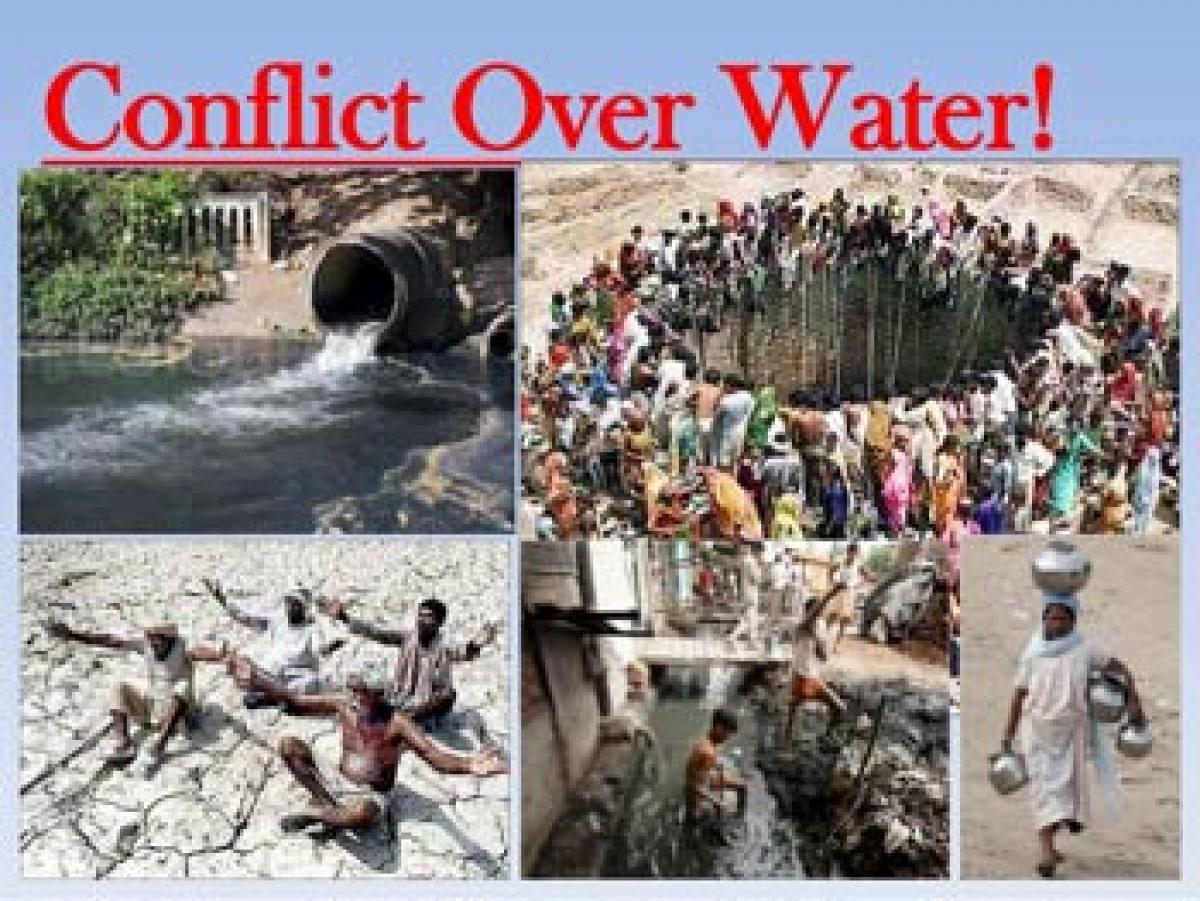Live
- Pakistan's Lahore remains world's most polluted city despite light drizzle
- Asha Nautiyal retains Kedarnath for BJP, to be back as MLA after 12 years
- India leads world in science, innovation research: Minister
- Flash flood in Indonesia's South Tapanuli claims two lives
- MahaYuti's electoral success testament to leadership of PM Modi, HM Shah: Ajit Pawar
- Unproven remedies: Tata Memorial Hospital slams Sidhu’s viral ‘diet cure’ cancer claim
- People voted in favour of development, rejected negative politics: CM Shinde
- Rajasthan bypolls: CM Bhajan Lal Sharma's governance credited with BJP's impressive show
- Aaditya Thackeray retains Worli defeating Shinde faction nominee Milind Deora
- Over 20 Injured in Multi-Vehicle Collision on Mangaluru-Bengaluru Highway
Just In

He has worked extensively on water issues and conflicts. Other environmental conflicts arise from an expanding economy. Most Indian conflicts listed in the EJAtlas appear to be a consequence of the country’s expanding economy.
There are more environmental conflicts in India than any other country, and more clashes are over water (27 percent) than any other cause, according to the recently released Global Environmental Justice Atlas (EJAtlas). India has 222 listed conflicts - in proportion to population, there are many more followed by Colombia and Nigeria with 116 and 71 conflicts, respectively, according to the EJAtlas, an interactive map of 1,703 global ecological conflicts, categorised by cause, such as water management, waste management, fossil fuels and climate justice, and biodiversity conservation.
With India currently facing the worst crisis in a decade and on course to becoming ‘water-scare’ within nine years, as IndiaSpend reported last month, the scale of the conflicts listed in the Atlas further indicate a worsening situation. Most water conflicts in Himachal Pradesh are related to hydroelectric projects, often planned without considering the needs and consent of local communities.
Similar conflicts have been recorded in Jammu and Kashmir, Jharkhand, Manipur, Mizoram, Orissa and Sikkim, among other States. There are other kinds of water-management conflicts. In Khandwa, Madhya Pradesh, locals objected to a municipal corporation partnership with a private company to build a pipeline and augment water supply, because prices were to be decided by the company.
Another example involves use of groundwater by Coca-Cola, involved in five conflicts with local communities protesting bottling plants (one each in Jaipur, Dehradun and Plachimada in Kerala, and two in Mehdiganj, near Varanasi. Dams are persistent sites of conflicts, especially when they are being built and commissioned, said Sailen Routray, an independent researcher based in Bhubaneswar.
He has worked extensively on water issues and conflicts. Other environmental conflicts arise from an expanding economy. Most Indian conflicts listed in the EJAtlas appear to be a consequence of the country’s expanding economy. For example, the raging underground fires in the Jharia coal mines in Jharkhand an exclusive storehouse of prime coking coal first seen a century ago, started spreading in the 1970s and, currently, more than 70 mine fires are underway, polluting the air, water and land and devastating the health of the locals.
Several conflicts centre around garbage dumping sites, such as Deonar in Mumbai, Sultanpur and Bandhwari villages near the national capital region, Kodungaiyur near Chennai, Eloor in Kerala and villages around Bangalore. Across India, more than three million truckloads of garbage is dumped without being treated, as IndiaSpend has reported, a manifestation of growing urbanisation.
Conflicts have also erupted at construction sites of new airports, seaports and other big infrastructure projects. The common theme running through most conflicts is loss of right to land or livelihoods of local communities. Although the EJAtlas lists 220 environmental conflicts in India, there are many more.
Joan Martinez-Alier, Professor of Economics and Economic History at the Autonomous University of Barcelona and director of EJAtlas project attributed conflicts to a growth in “social metabolism”, prompted by economic expansion. The high environmental costs in states that supply raw material Environmental conflicts are global, but India differs from other developing countries in South America or Africa on one crucial point: External trade.
The national green tribunal ‘Â’s successes aren’t enough to stem the tide In recognition of rising environmental disputes, the government established a National Green Tribunal in 2010 to serve as a fast-track court for such disputes, but the tide of environmental conflicts is not ebbing. NGT has played a good role (in delivering environmental justice),” said Swapan Kumar Patra, one of the Indian contributors to the EJAtlas.
In an unrelated paper, Patra and V V Krishna, professor at JNU and the other Indian contributor to EJAtlas wrote: “Since its inception, NGT has given many fast-track judgments in various cases and has passed several orders to the respective authorities like ban on illegal sand-mining, against noise pollution in Delhi, preservation of biodiversity of Western Ghat Mountains, wildlife protection in Kaziranga National Park in Assam, suspended many environmental clearance and so on.’ However, despite NGTÂ’s intervention and rising participation from affected locals, environmental injustice in India is on the rise.
The question, however, is not how to avoid the conflicts, said Martinez-Alier, but how to profit from the awareness of so many conflicts in order to move to an economy which is more sustainable and also more socially just. (The writer is a Bangalore-based freelance science writer)

© 2024 Hyderabad Media House Limited/The Hans India. All rights reserved. Powered by hocalwire.com







